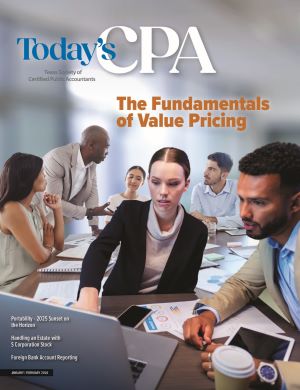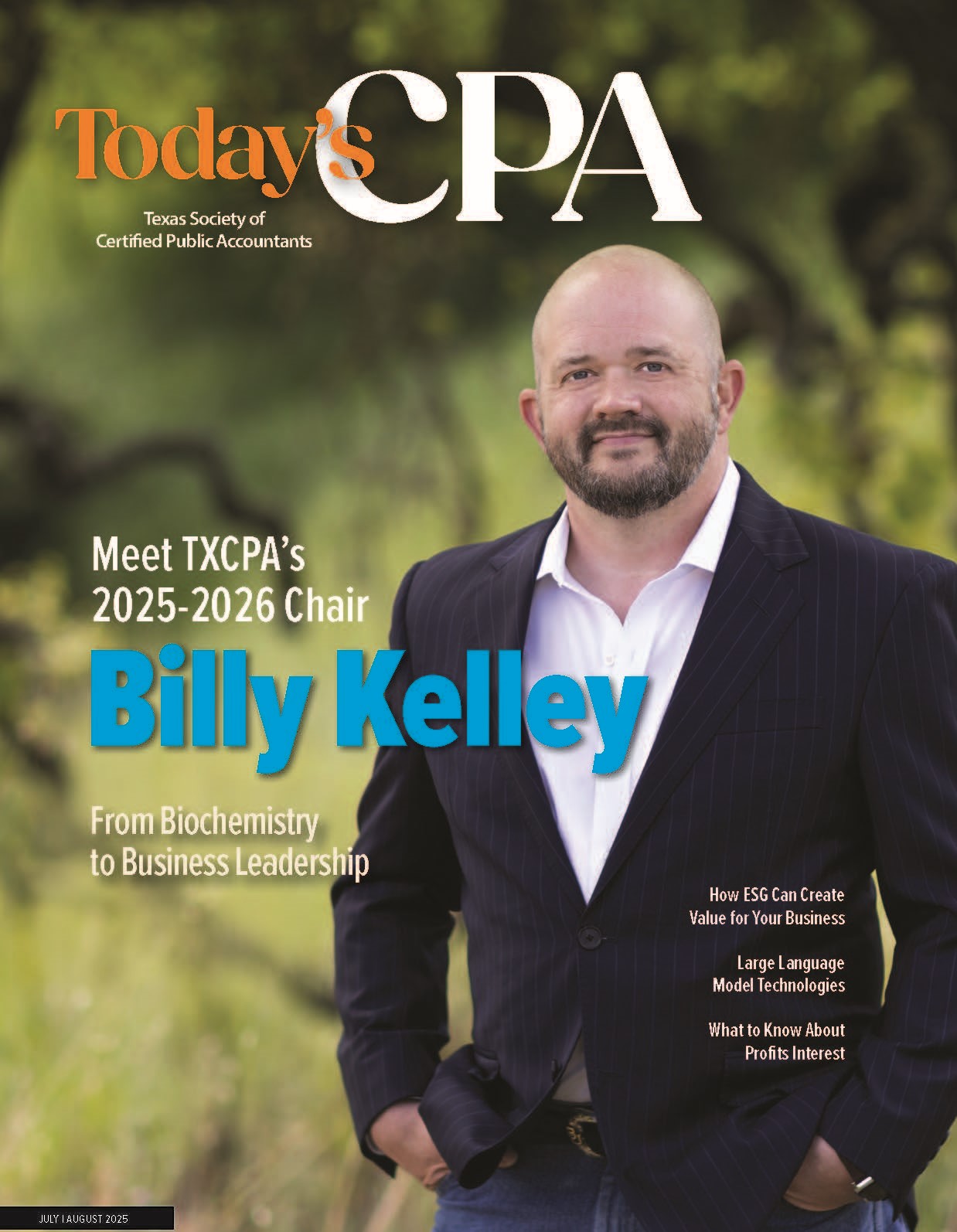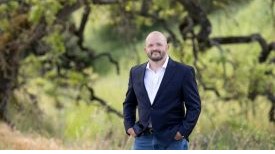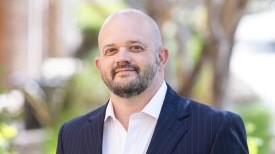By Jovana Popovich
No matter your level of experience in estate administration matters, it is prudent to revisit the Code and Regulations whenever working on an estate where the decedent owned S corporation stock at death so as not to inadvertently terminate the corporation’s S status.
This article aims to provide a high-level overview and reference tool covering the practical, procedural and timing matters applicable to estates and testamentary trusts that typically arise during an estate administration. This article is not intended to be a substitute for a thorough analysis of the pertinent Code and Regulations provisions, but rather a basic reference tool for practitioners to consult as a high-level guide.
Permissible Shareholders of
S Corporation Stock
Code Section 1361 provides the requirements that a corporation must meet to make an S corporation election. Among other restrictions, the corporation can have no more than 100 shareholders and only certain persons own stock in the corporation. These eligible shareholders include, but are not limited to, U.S. citizens and resident aliens, estates of individuals who were eligible S corporation shareholders at death, and certain trusts. (Code Sections 1361(b)(1) and 1361(c)(2)).
Importantly, a single ineligible shareholder can cause an existing S corporation to lose its S status and automatically convert to a C corporation. (Code Section 1362(d)(2)). As noted above, this article focuses on the circumstances and procedural requirements under which estates and testamentary trusts can qualify as S corporation shareholders so as to ensure the underlying corporation maintains its S status.
Estates
The estate of a U.S. citizen or resident alien qualifies as an eligible S corporation shareholder for the duration of the administration of the estate. (Section 1361(b)(1)(B)). Under long-standing case law, an estate is considered “under administration” during the reasonable period necessary for the executor to perform all of the duties with respect to the distribution and administration of the estate. See, e.g., Old Virginia Brick Co., Inc. v. Comm’r., 66-USTC 9708.
Where the estate administration is unreasonably prolonged, the estate is deemed terminated and the S corporation stock deemed distributed to the beneficiaries. (Id.) Note, however, the IRS will not consider the administration of an estate unreasonably prolonged if the purpose is to pay estate tax on an installment basis under Code Section 6166. (Rev. Rul. 76-23, 1976-1 C.B. 264).
S corporation stock held in a minor’s or incompetent person’s estate is deemed owned by such person directly and is not considered to be held by an estate for purposes of Section 1361. (Rev. Rul. 66-266, 1966-2, C.B. 356). Additionally, with respect to the 100-shareholder limit and the applicable stock attribution rules, any estate’s S corporation stock is treated as owned directly by the decedent. (Code Section 1361(c)(1)(A).

Testamentary Trusts
A trust that receives stock of an S corporation pursuant to the terms of a will is automatically considered a qualified S corporation shareholder for a two-year period beginning on the date the stock is transferred to the trust. (Code Section 1362(c)(2)(A)(iii). The Code defines trusts in this category only by the nature of the transfer of S corporation stock. Therefore, it is not relevant whether the trust receiving S corporation stock is created by the same testamentary instrument or if it is a pre-existing trust. See Treas. Reg. 1.1361-1(k)(1), Example 3(i). During the two-year period, the S corporation stock is deemed owned by the estate of the testator whose will transfers the relevant stock.
In the absence of another means of qualification, such as the trust being a grantor trust as to the owner (discussed below), a trustee of a testamentary trust may find itself with a two-year limit on retention of the S corporation stock. Importantly, however, a testamentary trust meeting certain requirements can be an eligible S corporation stock shareholder indefinitely if it elects to be treated as an Electing Small Business Trust (ESBT) or as a Qualified Subchapter S Trust (QSST). The rules for trusts to qualify as ESBTs or QSSTs are discussed in detail below. (Treas. Reg. 1.1361-1(h)(3)(i)(B)).
A testamentary trust that intends to become a QSST or ESBT must file the applicable election within two months and 16 days after the end of the two-year automatic qualification period for testamentary trusts discussed above.
From a planning standpoint, it is therefore important to draft the testamentary trust provisions to allow for ESBT or QSST qualification. During the administration of the estate, the executor should determine (a) which type of election is permitted by the terms of the will and is in the best interests of the beneficiaries, and (b) ensure that the requisite election is ultimately made, as failure to timely make the appropriate election can result in the loss of S status for the corporation.
In most cases and for administrative simplicity, it is best practice to retain the S corporation stock in the estate until the ultimate distribution of the estate assets and then make the appropriate election for the testamentary trust to be effective as of the date of the stock transfer from the estate.
Below is a discussion of the requirements for electing QSST and ESBT status for trusts, as well as the procedures and deadlines for making the elections.
Qualified Subchapter S Trusts (QSST)
Created by the Economic Recovery Act of 1981, the QSST is the first of two elective treatments that allow a trust to remain an eligible shareholder of an S corporation for an indefinite duration. Under Code Section 1361(d)(3), a trust must meet the following criteria to qualify as a QSST:
• All trust income must be distributed to a single income beneficiary who is a U.S. citizen or resident alien until the earlier of the death of the beneficiary or the termination of the trust;
• Any principal distributed during the current income beneficiary’s lifetime must be distributed only to that beneficiary; and
• The trust agreement must provide that if the trust is terminated during the beneficiary’s lifetime, all trust assets are to be distributed to the current income beneficiary.
The requirement for income to be distributed to a single income beneficiary is often cited as the largest disadvantage of a QSST. The income distribution requirement effectively causes the income to accumulate in the taxable estate of the current income beneficiary, deprives the trust income of protection from the income beneficiary’s creditors and former spouses, and allows other beneficiaries (e.g., minor children) to potentially share in the trust income via gifts from the income beneficiary, which the grantor may not have intended.
Another significant disadvantage of a QSST election is the limitation of only one income beneficiary for the trust. This prevents use of the QSST election in common bypass or family structures. Note however, QTIP trusts generally qualify for QSST treatment due to having the surviving spouse as the sole income beneficiary and restrictions on distributions to others during the surviving spouse’s life.
The QSST Election
Code Section 1361(d)(2)(A) requires the current income beneficiary of the trust to make the QSST election. The QSST election is due within two months and 16 days following the transfer of the S corporation stock to the trust and is revocable only with the consent of the Secretary. (Code Section 1361(d)(2)(C)–(D)). Additionally, a separate election must be made by the beneficiary with respect to each S corporation in which the trust owns stock. (Code Section 1361(d)(2)(B)(i)).
Under Treas. Reg. 1.1361-1(j)(6)(ii), the QSST election must be in a form or statement that:
• Contains the name, address and taxpayer identification number of the current income beneficiary, the trust and the S corporation;
• Identifies the election as an election made under Code Section 1361(d)(2);
• Specifies the date on which the election is to become effective (not earlier than 15 days and two months before the date on which the election is filed);
• Specifies the date (or dates) on which the stock of the S corporation was transferred to the trust; and
• Provides representations that the trust meets all of the requirements of a QSST under Code Section 1361(d)(3).
Part III of IRS Form 2553, Election by a Small Business Corporation, is used to make the QSST election only if stock of the corporation has been transferred to the trust on or before the date on which the corporation makes its election to be an S corporation.
Electing Small Business Trust (ESBT)
ESBTs were created by the Small Business Job Protection Act of 1996 as a more flexible alternative to QSSTs. Unlike a QSST, an ESBT may have multiple beneficiaries and accumulate income.
Each “potential current beneficiary” of an ESBT must be an eligible S corporation shareholder and will count towards the 100-shareholder limit. (Code Section 1361(c)(2)(B)(v)). Note, however, an ESBT may have nonresident alien as a potential current beneficiary. (Treas. Reg. 1.1361-1(m)(1)(ii)(D)).
A potential current beneficiary generally includes any person who during the relevant period is entitled to or may receive at the discretion of any person a distribution from the income or principal of the trust. (Code Section 1361(e)(2)). For example, with a bypass trust, the surviving spouse and each living descendant will count as a potential current beneficiary.
The price for this flexibility is that, unlike a QSST, the ESBT is treated as a separate taxpaying entity with respect to the S corporation stock, which adds administrative complexity and a potentially higher tax liability on the S corporation income. Specifically, an ESBT is effectively split into two trusts for tax purposes with one “trust” holding only the stock in one or more S corporations and a separate “trust” holding the remaining assets. (Code Section 641(c)(1)).
The “trust” holding the S corporation stock pays tax on the S corporation income at the maximum marginal rate for individuals. (Code Section 641(c)(2)(A)). Importantly, this tax is paid at the trust level and at the highest rate even if the trust subsequently makes corresponding distributions to the beneficiaries. (Code Section 641(c)(2)(C)).
There is an additional restriction on qualification as an ESBT, which provides that no interest in the trust may have been acquired by a purchase. (Code Section 1361(e)(1)(A)(ii)). A purchase for this purpose is defined as any transaction in which the acquirer takes a cost basis under Section 1012. (Code Section 1361(e)(1)(C)). It is important to note that this restriction does not disallow the ESBT from acquiring stock in an S corporation by purchase.
The ESBT Election
The trustee of the trust, not the beneficiaries, makes ESBT election, which is only revocable with the consent of the Secretary. Unlike the QSST election, a single ESBT election covers all transfers of S corporation stock to the electing trust. (Treas. Reg. 1.1361-1(m)(2)(i)). Under Treas. Reg. 1.1361-1(m)(2)(ii), the ESBT election must be in a statement that includes:
• The name, address and taxpayer identification number of the trust, the potential current beneficiaries and the S corporation(s) in which the trust owns stock;
• An identification of the election as an ESBT election under Section 1361(e)(3);
• The first date on which the trust owned stock in each S corporation;
• The date on which the election is to become effective; and
• Representations signed by the trustee stating that the trust meets the requirements of Section 1361(e)(1) and that all potential current beneficiaries of the trust are eligible shareholders of an S corporation (except that a nonresident alien potential current beneficiary does not violate the requirement that all potential current beneficiaries be eligible shareholders).
The ESBT election has the same due date of two months and 16 days after the acquisition of S corporation stock as the QSST election. (Treas. Reg. 1.1361-1(m)(2)(iii)). Please see Table 1 for a summary of the QSST and ESBT requirements.
Table 1. Summary of QSST and ESBT Requirements
| | |
|---|
| | QSST | ESBT |
| Beneficiary | Single income beneficiary (must be U.S. citizen or resident).
| Multiple beneficiaries. |
| Distributions of Income | All income must be distributed to single income beneficiary.
| May accumulate income. |
| Distributions of Principal | Must only be made to single income beneficiary.
| No restrictions. |
| Tax Liability | Simple trust – single income beneficiary taxed on the distributed S corporation income.
| Separate S corporation “trust” pays tax on S corporation income at highest marginal rate.
|
| Election | Income beneficiary makes the election; a separate QSST election must be made for each S corporation in which the trust owns stock.
| Trustee makes the election; only one ESBT election needed for the trust. |
Grantor Trusts and Qualified Revocable Trusts
All grantor trusts qualify as S corporation shareholders during the life of the owner and for a two-year period beginning on the date of the owner’s death. (Code Section 1361(c)(2)(A)(ii)).
Additionally, a revocable management trust holding S corporation stock at the owner’s death that makes an election under Code Section 645 to be taxed as part of the decedent’s estate will continue to qualify as an S corporation shareholder until the later of (i) two years or (ii) the entire Section 645 election period. (Treas. Reg. 1.1361-1(k)(1), Example 3(ii)). A typical management trust is a “qualified revocable trust” as defined in Code Section 645 and may make an election to be taxed as part of the decedent’s estate.
Further, because a revocable management trust with a Section 645 election in place is treated as part of the decedent’s estate, the two-year automatic eligibility rule for testamentary trusts discussed above will apply to any trust receiving S corporation stock upon the grantor’s death. (Id).
When a revocable management trust for a married couple holds S corporation stock, assets are typically divided between the deceased grantor’s trust (for example, a bypass or family trust) and the surviving grantor’s trust (a management trust for the surviving grantor) at the death of the first grantor. If the S corporation stock passes to the surviving grantor’s trust, the trust will likely automatically qualify as an S corporation shareholder as a grantor trust to the surviving spouse.
If, alternatively, the S corporation stock passes to the deceased grantor’s trust or different trust created upon the deceased grantor’s death, additional steps will typically need to be taken to ensure that such trust can qualify as an S corporation shareholder. For example, QTIP marital deduction trusts created upon the deceased grantor’s death meet all the requirements to qualify as an S corporation shareholder, either as a QSST or an ESBT. Additionally, a bypass or family trust can typically only qualify to make an ESBT election.
However, the bypass/family trust provisions sometime provide a “carve out” where the S corporation stock can be held in a separate and parallel trust that qualifies as either an ESBT or a QSST. In this case, the trustee would sever the trust into two separate trusts, one trust qualifying as a QSST/ESBT to hold the S corporation stock and another trust to hold the other assets.
The trustee (or beneficiary, as the case may be) can then make the appropriate election for the trust holding the S corporation stock. With respect to timing/advisability of the ESBT/QSST election, recall that if the distributing revocable management trust previously made a Section 645 election, the recipient trust will have automatic S corporation shareholder eligibility for up to two years from receipt of the S corporation stock.
Accordingly, when handling an estate administration with a revocable management trust and S corporation stock, it is vital to determine early on whether the stock was owned by the decedent individually or by the revocable management trust at death, and it is particularly important to be aware of whether or not a Section 645 election was made for the revocable management trust. Please see Table 2.
| Table 2. Summary of Time Period as Eligible Shareholder for Estates and Trusts | |
Estates
| Eligible shareholder for the natural duration of its administration (assuming decedent was an eligible shareholder).
|
Grantor Trusts
| Eligible shareholder during owner’s lifetime (assuming owner is an eligible shareholder).
Remains an eligible shareholder for two years after the owner’s death.
If a qualified revocable trust (e.g., a typical management trust), a Section 645 election can extend eligibility past 2 years through the entire Section 645 election period.
|
Testamentary Trusts
| Eligible shareholder for two years following transfer of S corporation stock from either an estate or an electing Section 645 revocable management trust.
Estate of the testator is deemed the eligible shareholder during the 2-year period.
At any point during this period and for the 2-month and sixteen day period following the two years, the trust may elect to become a QSST or ESBT to achieve permanent eligibility.
|
| QSSTs/ESBTs | A non-grantor, non-testamentary trust has two months and sixteen days from receipt of the S corporation stock to file a QSST or ESBT election; otherwise the trust is an ineligible shareholder. |
Late Elections
If a trust fails to timely file the appropriate QSST or ESBT election, the trust will fail to qualify as a permissible shareholder, which can have significant tax consequences, including causing the company to lose its S corporation status. The regulations provide that a corporation may generally seek relief under Section 1362(f) for inadvertent termination of an S election by submitting a private letter ruling request. (Reg. § 1.1362-4(c)). However, there is also a simplified proceeding to obtain a late QSST or ESBT election. (Rev. Proc. 2013-30, 2013-36 I.R.B. 173). This also applies to a late election for S corporation status as well.
Rev. Proc. 2013-30 provides general requirements for late election relief. Relief must be filed for within three years and 75 days after the intended effective date of the election. Additional general requirements include that the entity intended to have the election in place as of the intended effective date and that failure to qualify for the intended status was solely due to the late filing of the election. Please see Table 3.
Table 3. Requirements for Filing a Late QSST Election
|
The filing for a late QSST election must be made by the trust’s beneficiary, and the filing for a late ESBT election must be made by the trustee. The filing must include the following elements.
|
A heading which states “FILED PURSUANT TO REV. PROC. 2013-30”
|
All information that would normally be required of a timely election
|
A statement that explains that the failure to timely file the election was inadvertent, and the diligent action taken to correct the mistake upon discovery;
If the late election is to be treated as a QSST, a statement that the trust satisfies the requirements of Section 1361(d)(3) and that the distribution requirements have been met and will continue to be met
|
If the late election is to be treated as an ESBT, a statement that the trust satisfies all requirements of Section 1361(e)(1) (other than the required election) and that all beneficiaries are eligible S corporation shareholders
|
A signed statement that states “Under penalties of perjury, I declare that I have examined this election, including accompanying documents, and, to the best of my knowledge and belief, the election contains all the relevant facts relating to the election, and such facts are true, correct, and complete."
|

Addressing the Issues
Handling an estate administration with S corporation stock can be tricky. While it cannot be emphasized enough that a thorough review of Code Section 1361 is necessary when a decedent owns S corporation stock, hopefully this article provides a basic and practical starting point in addressing these issues as the practitioner works through the estate administration process.
About the Author: Jovana Popovich is a shareholder at Fizer Beck, specializing in estate planning and probate. She can be reached at JPopovich@fizerbeck.com.

















